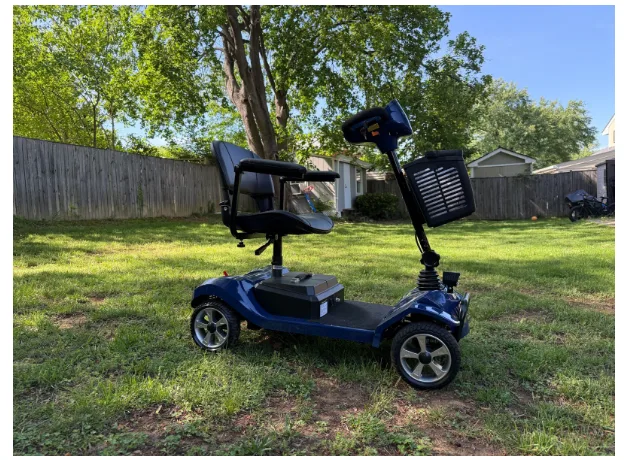Exposure to Asbestos: Legal Steps to Take if You’ve Been Affected
For decades, certain industries used materials that posed serious health dangers. People working in older buildings, shipyards, or construction zones often came into contact with toxic fibers. These materials were once praised for durability but later revealed to be harmful to human health. Many individuals were unaware of the long-term consequences until symptoms began showing up years later.
If you’ve been diagnosed with a condition linked to this kind of contact, you may have options beyond medical treatment. Legal steps exist for those seeking accountability and compensation. Navigating those options requires specific knowledge and support.
Here’s what you can do following the exposure:
Recognizing the Risks and Symptoms
Exposure often occurred in places where insulation, cement, ceiling tiles, or roofing materials were common. Jobs like mechanics, shipbuilders, or demolition workers faced daily contact with hazardous dust. Over time, people in those environments inhaled or ingested the fibers without knowing it.
Symptoms tied to related diseases usually appear decades later. Common early signs include difficulty breathing, persistent coughing, and unexplained weight loss. These symptoms are often mistaken for other illnesses, making diagnosis harder. If you or someone you know worked in high-risk settings, it’s important to speak with a healthcare provider familiar with related conditions.
Why Legal Help Matters
Taking legal action after a diagnosis isn’t the same as filing a typical injury case. These matters involve decades-old work histories, complex medical details, and unique filing systems. That’s where specialized assistance becomes essential.
Experienced asbestos lawyers who focus on these cases provide detailed help with identifying the source of contact, connecting it to medical proof, and filing within strict deadlines. They offer free consultations, national reach, and decades of experience dealing with mesothelioma-related matters. Their support includes help for military families, union workers, and even those unsure of how they came in contact with the hazardous material.
These lawyers help clients secure financial recovery through court action or trust funds. Their involvement simplifies a difficult process and gives people a path forward during an overwhelming time.
Documenting Your Exposure
Detailed records help build a strong case. Start by gathering your employment history, especially roles held in the 1960s to early 2000s. Include job titles, employer names, job sites, and duration of work. List any tasks that might have put you near old insulation, boilers, construction materials, or contaminated air.
Medical files are equally critical. Copies of diagnoses, scans, lab tests, and doctor notes connect the health condition to a history of contact. If you’re unable to locate these documents, a good support team can help access them from hospitals, clinics, or government agencies.
Family members of those affected should also collect this information if pursuing a case after a loved one’s passing.
Understanding Time Limits
Every state has different rules for how long someone has to take legal action. The countdown typically starts at the time of diagnosis, not at the time of exposure. That distinction matters. It gives people a window to respond once they learn the true cause of their condition.
In some states, the filing period is as short as one year. Others allow up to three years. Missing these deadlines can stop a case from moving forward, no matter how strong the evidence may be. That’s why quick action is key—even if you’re still gathering records.
It’s also worth noting that surviving family members have separate filing periods in wrongful death cases. These timelines can differ from those involving someone still alive.
Filing a Lawsuit or Trust Claim
People harmed by asbestos-related illness typically have two main options: filing a lawsuit or applying for compensation through an established trust. These trust funds were set up by companies that went bankrupt years ago but still owed financial support to affected workers and families.
Filing a lawsuit may be the best option when trust funds aren’t available or don’t fully cover expenses. These cases involve naming the company responsible for unsafe working conditions and proving that illness resulted from their negligence.
In contrast, trust claims are usually faster. They don’t require court appearances and are often handled through paperwork. Many people qualify for both, depending on where and when they worked.
The right guidance can help you understand which path is best for your situation and how to begin.
Compensation You May Qualify For
If your case is successful, you may receive financial recovery for several categories. These include medical expenses, lost wages, and emotional distress. In some cases, you might qualify for additional support for future care needs or reduced earning capacity. Families who have lost loved ones may also pursue compensation for funeral costs and loss of companionship.
It’s important to know that awards vary widely. Several factors influence outcomes, such as the strength of your documentation, where the case is filed, and whether the responsible company is still operating or has established a trust. Strong guidance helps estimate the amount you may be entitled to and how long the process could take.
What Happens During a Legal Case
Once you decide to move forward, your case typically starts with a consultation. From there, your team will gather records, prepare documents, and identify potential sources of exposure. You’ll likely answer questions about your work history, medical background, and current condition.
After this step, the case may enter the discovery phase. This is where both sides collect and exchange information. During this time, many cases settle without going to trial. If a trial is needed, your legal team presents evidence, expert testimony, and argues on your behalf.
Throughout the process, most people find that their role is limited. Skilled firms handle the details, allowing clients to focus on their health and well-being.
If you’ve been affected by harmful materials used in the past, you’re not alone. Many others have faced similar struggles and found ways to hold companies accountable for the harm done. Whether you’re just now discovering your diagnosis or already gathering paperwork, it’s never too early to ask questions and explore your options.
Legal action isn’t just about money. It’s about protecting your future and making sure your story is heard. The right support can guide you through the process and help bring peace of mind in a difficult time.






